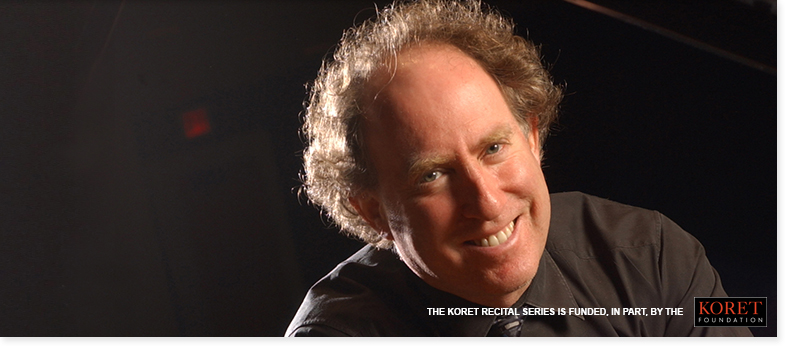
CONDUCTOR KAHANE RETURNS TO PIANO ROOTS
BERKELEY—I’ve been fascinated by the California pianist Jeffrey Kahane ever since the 1981 Van Cliburn Competition. He didn’t win it (gold went to André-Michel Schub). But media reports established that, in the opinion of various finalists, though Kahane was unlikely to get the gold medal, he was considered the best keyboard performer of the lot. A rare accolade among high-echelon pianists!
Happily, Kahane bounced back two years later, winning the Rubinstein International Competition.
Although a successful symphony conductor over the past three decades, Kahane, 60, still finds time for piano recitals, such as his March 12 one at Hertz Hall. Now his strong suit at the keyboard is not his lyricism of old, but rather his on-going interest in contemporary repertoire. Between sonatas of Schubert and Chopin, he spotlighted pieces of thirtysomething composers Timo Andres and Gabriel Kahane written in this decade, both under 10 minutes in length.
Gabriel K.’s fluency in mainline pianistic style and harmonies was evident in “Works on Paper,” starting with the whimsical “Death to Advertising” and closing out with an imagined folk song. In the central “Veda” section, after a Joan Crawford movie, the piano has the supreme challenge of portraying regret—the judgment is still out on that one! In a less conventional mode, the score calls for the pianist (here, Gabriel’s father) repeatedly to pluck individual strings in reach-over pizzicato with the left hand, giving the effect of an accompanying instrument.
Andres’ “Heavy Sleep” is a wispy work positioned somewhere between Satie and Debussy. Isolated slow chords are struck at the bottom and top of the keyboard, forcing the performer’s considerable stretching. Gradually gaps in the structure are filled in by the player, but the effect is enigmatic, with a Gallic touch rarely exploited here.
In the standard repertory, Jeffrey K. played with steady-as-she-goes refinement, devoid of flash. His Schubert (G Major Sonata, D. 894) was assertive, stentorian, disciplined, as if building unshakable columns to line his concert. His correct but formal interpretation with a percussive bent was more a battle to be won that a foray to smell the roses.
His Chopin (Sonata No. 3) was more compelling, with its dynamic contrasts and expansive nature, and virtuosic velocity executed in a blur in both the second and fourth movements. I particularly liked the barcarolle effect in the Largo.
Trending these days among recitalists is the banning of sheet music. Where a score is used at all, Kahane like others brings out an electronic-score pad, rendering page-turners obsolete. Batteries included, but the pianist still has to bring his own energy.
ARTS NOTES—Since 1988, Kahane has been more prominent as a conductor, as leader of the Colorado and (for 10 years) Santa Rosa Symphonies as well as the Los Angeles Chamber Orchestra….Two Californians have made it big in contrasting performing-arts specialties. Am I the only one noting the strong resemblance between the stand-up comic Josh Kornbluth and musician Kahane? (I expect to get two emails shortly: “He doesn’t look at all like me!”)
Jeffrey Kahane, in piano recital March 12 at Hertz Hall, Berkeley, presented by Cal Performances. Info on the latter: (510) 642-9988, or go online.